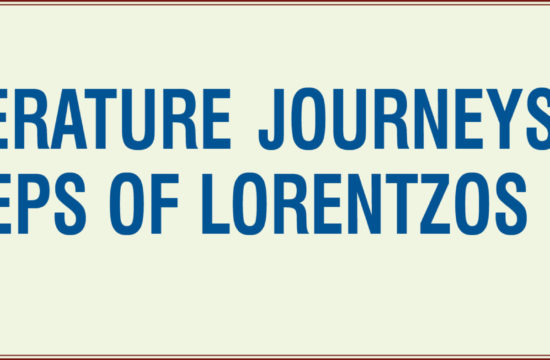Matzoyrani Kleopatra (kleomantz@yahoo.gr) National and Kapodistrian University of Athens (NKUA), MeD in Educational Evaluation, NKUA.
Maniou Fotini (fvtinimaniou@yahoo.gr). Master of International Studies from the University of Aegean
Vergi Aikaterini (katherinevergi@gmail.com) Undergraduate student in West Attica University, Department of Tourism Management
Abstract
Film tourism represents a large part of the global tourism industry and its targeted audience is still growing. The reason behind it, is the fact that for a wide range of people, the characters of a story, its events, which take place in altered realities, are the reason to travel. As a result, all the above are transformed into a tourist product. This article aims to highlight the dynamics of film tourism as well as the large percentage of its economic, cultural, anthropological, political and cultural impact in a country. This will be achieved by presenting a case study concerning the city of Matera and even smaller villages such as Sassi, which through the awareness of literal and then cinematic works written about them, managed to have the publicity and attention they deserved and as a result, these areas not only recovered financially but also improved the living standards of their inhabitants.
Key words: Matera, cinema, Sassi, film tourism. Culture.
Introduction
The term film tourism, according to Buchmann, is a visit to an area or place that has been used or is related to the production of a movie. Since the end of World War II, the Basilicata area has been used for more than 40 film productions. Most of these movies, from Pier Paolo Pasolini’s „The Gospel According to St. Matthew“ to Francesco Rosi’s „Christ Stopped at Eboli“, portrayed the Basilicata’s regression and sadness, inspired by works by authors such as Carlo Levi and Ernesto De Martino. Matera is an excellent case study for film tourism and that is, because the first film productions made there depicted the same sad scenario as the productions in Basilicata. In recent years, it has starred in movies such as „The Passion of the Christ“ of Mel Gibson, who played a very important role in shaping the current image of Matera as a mysterious, cultural and dynamic city. Eventually, Matera received the title of European Capital of Culture for the year 2019[1] and this proves the impact and recognition it gained pan-European.
Matera in the past
In 1950, Sassi, the oldest part of Matera, was a set of caves and very poorly built houses inhabited by peasant families as well as the animals they kept and raised. People there lived in a „Paleolithic“ world, which according to Togliatti was defined as „national shame“.[2] After a series of laws, the city of Sassi was finally evacuated. However, in 1945 in „Cristo si è fermato a Eboli“, Carlo Levi according to Manola (Manola et alias 2020) described the peasant world of Sassi as an ancestral universe, which was sacred, mysterious and magical but at the same time, poor, unhealthy and backward. People and their animals lived in humiliating hygienic conditions while being socially and physically alienated from the bourgeoisie. More specifically, Carlo Levi describes in his memoir at “Christ Stopped at Eboli”: “The houses were open to heat, as I walked through the caves, I could only see with the light coming from the front door. Some of them did not even have a door but a staircase or a trapdoor. In these dark holes with the torn walls of the earth I could see some pieces of miserable furniture, beds as well as tattered clothes hanging to dry. Dogs, sheep, goats and pigs were lying on the floor. Most families lived in a cave where they all slept together: Men, women, children and animals. This is how 20 thousand people live. As for the children, they were infinite. They appeared from everywhere, through the dust and heat, among the flies, dressed in rags or half-naked. „I have never seen such a picture of poverty in my life.“ (Levi 2006, p.85 cit in Manola et alias). Levi’s memoir, which narrate his exile in the Basilicata from 1935 to 1936, testify to the brutal degradation and poverty that characterized the Sassi of Matera in a period of fascism. Manola (2020: 9) states that the writers who are the protagonists of their literary work act as guides, “but not only in mental journeys but also in real ones, and many times in particular messages that have to do with the society in which the novel writers and protagonists live and act“. In 1937, a survey was conducted to determine the sanitary conditions of the houses that were around 3000: 17% of them were considered unfit for habitation. Many of them were dug into stones, with very little light, insufficient oxygen and a high level of humidity. By the mid-1960s, Sassi was almost completely evacuated and with it „the feeling that along with the people, the identity of the city had disappeared“(Felicetti M.,2016). At the same time, the evacuation of Sassi was not accompanied by an upgrade of the houses, which eventually led to the complete evacuation of the historic center. The issue of Sassi resurfaced in 1970. Law 126 in 1967 and Law 1043 of 1971 imposed the improvement and preservation of Sassi as a site of „historical, artistic, archaeological and ethnographic interest“. The legislative approach was considered not only from a social point of view but also from a historical-artistic perspective. However, funding provided by the Law of 1971 was cut short due to the country’s financial obligations, and so the renovation finally began in 1986 with the Law 771. Subsequently, two two-year projects were created, each focusing exclusively on the remodeling of Sassi and the promotion of tertiary activities such as crafts. Eventually, the population of the area, the development of commercial activities and the infrastructures for accommodation increased in 1990.
Matera as European Capital of Culture in 2019
Matera has been a World Heritage Site since the early 1990s. The decision was made to participate as a candidate in 2013 for the European Capital of Culture of 2019[3]. The dossier, which was presented and accepted by the European Union, states that 52 million euros were allocated for cultural planning and 650 million euros for infrastructure, transport, urban regeneration, energy and digital programming. The resources allocated for cultural planning came from various organizations such as the Basilicata Region, by the Municipality of Matera, by the Government, while only 3% would be given by the European Commission. Many social and cultural organizations, political parties, church people and individual volunteers collaborated to make the design. Some organizations such as the La Scaletta Cultural Organization and the Oppido Lucano Film Library merged into one, as the Institute for Demo – Ethno Anthropology (I-DEA), which was one of Matera’s main projects. One of the ideas for this project was the idea of the „Open Design School“ which aimed to continue the tradition of furniture manufacturing that was going through a period of crisis. To be successful, writers, bloggers, designers, artists, hackers, students and academics would have to work together. There were many more projects that were in the design and had a positive result since Matera claimed the title of European Capital of Culture. According to Manola (2019:34-35) all this publicity created many positive outcomes for the tourism in Matera. Specifically, in 2014 there was a 16.4% increase in arrivals and an 18.5% increase in overnight stays, which translates to 153 tourists and 244 thousand more nights compared to 2013. In Basilicata there has been an increase in tourism by 8.7% and with a greater deepening of the data it shows that there has been a more than double increase in tourists in the last six years, with the majority of them coming from France, the United States, Germany and the United Kingdom, while Italians who chose to visit Basilicata were from the areas of Puglia, Campania, Lazio and Lombardy.
Matera and Cinema
In all the events surrounding the historic center of Matera, the cinema played an important role in the ability to withstand the remodeling of Sassi but also in its active participation in it. Matera has been used as a main location for over 30 movies. There are two fundamental trends that can be identified in the presentation of Sassi’s setting: the first is, the presentation of the area authentically, with the presentation that had the post-war period and the second, uses the setting to tell stories which are not part of the local identity of the area now.
The film productions in Matera in the 50’s and 60’s were influenced by the popular thoughts and reasoning of Levi and De Martino, that were focused on the problems of Basilicata. Specifically, the film focused on the dramatic and poor living conditions in Sassi, presenting it as a „dark land without sin and redemption“, as Levi mentions in his memoir. The first film to be shot exclusively in Sassi was „La Lupa“, directed by Alberto Lattuada, a rendition of the literary book with the same title by Giovanni Verga. The film tells the story of a woman whose uncontrollable sexuality causes a scandal in a small town. Lattuada makes the interesting decision to use Sassi not as a background to represent a Sicilian city (as in the literary book), but as the actual location where the events occurred. The landscape also adds dramatic dynamics to the film and is thus integrated with Verga’s work. For example, the first part of the film is dedicated to the Matera’s Festa della Bruna[4], where the story begins to unfold. The inclusion of Matera’s traditions and customs served to keep the film intertwined with the new local context. Many documentaries were made after the war. In 1949, Carlo Lizzani made his directorial debut with the documentary „Nel Mezzogiorno qualcosa è cambiato“, meaning, „Something has changed in the South”. It was created during the „Renaissance“ of the South, when a group of farmers, workers and students all came together to live in various southern cities, including Matera, Lizzani. It presented the procedures of the re-establishment of the cities and as a result, it gave hopes for the future. In contrast to Levi’s work, which was intended to be a social, political and anthropological description of the Basilicata, Lizzani emphasized the spirit of „renaissance“ that was prevalent in the southern cities (Bernagozzi, 2002). While the documentary begins by showing the interior of the caves in Sassi, showing people sharing the same space with the animals, it ends with a happy note and that is when all the farmers return to their homes after the remodeling of the cities. There were many directors who were interested in presenting life in Matera and Basilicata: even more so after the anthropological expeditions organized by Ernesto De Martino, which presented the rituals and superstitions that existed in the area. A few more documentaries were made in Basilicata, which wanted to depict the cultural and social conditions of the city. One of them is the „Superstizione“ but also films such as „Magia Lucana“ and „La Madonna di Pierno“, directed by Luigi di Gianni, one of the most important documentary directors of anthropological interest. Another movie was „Il Demonio“ by Brunello Rondi. His goal was to reflect the Basilicata as the „magic world“ that everyone described in the ’50s and‘ 60s. It is half documentary and half drama and presents the rituals that were performed against the „evil eye“, the exorcisms and the superstitions, which according to De Martino (1973) had the necessary imagination to provide support to people living in adverse conditions. The protagonist in the film can’t cope with the grief caused by the death of his beloved and thus, ends up with the problem of possession, but still hoping that he will not lose his love. The film does not have a happy ending and it includes many sacrifices, magical practices, exorcisms and funerals, which the director manages to present as a documentary. Everything presented in the film shows the regression and dissimilarity that existed in Basilicata in relation to the economic development that existed in other parts of Italy. This kind of representation, which weakened in the ’70s has another very important example and that is, the film „Cristo si è fermato a Eboli“ by Francesco Rosi, which was based on the book by Carlo Levi, who presents the identity of the area and some pieces from the history of Basilicata with absolute realism. The film, like the book, focuses on the city of Aliano, where the author lived, but there are also descriptions of Matera, which mention the difficult living conditions in Sassi as well as concerns about the future of the area.
In the mid-1960s, Pasolini’s „The Gospel According to St. Matthew“ (1964) began a new trend, that of biblical events in the Sassi of Matera. The film, which narrates the life of Jesus in this underdeveloped area of the South, can be considered a synthesis of the two trends mentioned above. Pasolini did not choose Matera because of its resemblance to Jerusalem but because it was a representation of the socio-economic situation in southern Italy. The film was shot in the areas of Basilicata, Lazio and Puglia. Sassi became the Jerusalem of Christian preaching while Murgia Materana Park was the scene of Jesus‘ crucifixion and resurrection. In addition to the general purpose of Pasolini’s work, which was to emphasize the revolutionary power of the Christian message and to give the viewers contact with something sacred, he also wanted to reveal and draw people’s attention to the inadmissible living conditions people endured in those areas.
After Pasolini’s work, the center of Matera began to be used as a backdrop for many film productions with its depiction far removed from reality. An example is the Hollywood version of „The Passion of the Christ“ (2004) produced by Mel Gibson. Most of the exterior shots were made in Sassi and show the passions of Christ. Like „Il Vangelo secondo Matteo“, the film ends at Murgia Materana park, the site that represents Golgotha , where the crucifixion takes place. In this film, the social presentation did not exist as in Pasolini’s work, but Sassi was used only for his resemblance to Jerusalem. This work and many more, such as „King David“ (1985) and „The Nativity Story“ (2006) offered another depiction of Sassi, which was far from reality, but at the same time presented the image of the Matera countryside with mysticism and architectural peculiarities, which brought great tourist and cultural fame to Sassi.
Conclusion
As mentioned above, on the one hand, the cinema distances itself from the local identity of Matera and tells stories that have nothing to do with it, but on the other hand, the arrival of many producers is a „showcase“ for the city. Mel Gibson’s „The Passion“ is very often used as an example of film tourism and has a great impact on the city from an economic / tourist point of view. With its global readership and internationally renowned actors, the project successfully promoted Matera to the global tourism market. Even if the film uses Matera to tell a story which originally happened in Jerusalem, following the passions of Christ, the viewer can admire the iconic landscapes of Sassi through the camera. There has been a huge increase in tourism in the following years since the premiere of the film. Specifically, in 2006 there was a 40% increase in tourist arrivals and 30% in overnight stays compared to 2003 (the film premiered in 2004) with an 83% increase in arrivals and a 53% increase in overnight stays for foreign tourists (De Falco,2006). These changes inevitably created awareness of the situation for the residents themselves, but also for the local governments to see the tourism prospects of the city and its protentional promotion through the cinema. In 2013, the Lucana Film Commission was created, an organization that aims to attract film producers in the region, providing services and financial support for film productions. As a result, in 2015 many producers became interested in making films in Matera, a typical example being Ben Hur’s blockbuster. No one can deny the impact that cinema has on a city or even a country, and Matera should be an example, which according to Manola (2020) literaly and then film tourism not only offered her economic growth but thanks to its popularity in the following years, the people in Sassi began to have a more dignified life with better living conditions. Tourism may be a carefree journey but taking Matera’s case study into consideration, it has a lot to teach the visitor about both cinema and literature (Manola, 2019).
References
Aquilino, L. & Armenski, T. & Wise, NA. (2018) “Assessing the competitiveness of Matera and the Basilicata Region (Italy) ahead of the 2019 European Capital of Culture” – Tourism and Hospitality Research, ISSN: 1742-9692.
Bencivenga, A. & Chiarullo, L. & Colangelo, D. (2015), “Film Tourism in Basilicata”- AlmaTourism Special Issue 4.
Colangelo, D. (2016), “Cinematic representation of landscape: image creation and tourism in the city of Matera”, pages 96-106 – Proceedings of the TCL2016 Conference.
Ivona, A. & Rinella & A. Rinella, F. (2019), “Glocal Tourism and Resilient Cities: The Case of Matera “European Capital of Culture 2019” – Sustainability, DOI: https://doi.org/10.3390/su11154118 [asserted: 02/12/2020].
Felicetti, M. (2016), “Cultural Innovation and Local Development: Matera as a Cultural District. Procedia” – Social and Behavioral Sciences 223: 614-618, DOI: https://doi.org/10.1016/j.sbspro.2016.05.366 [asserted: 02/12/2020].
Gribaudo, M. & Iacono, M. & Levis, A. (2017), “An IoT‐based monitoring approach for cultural heritage sites: The Matera case” – Concurrency and Computation 2017, 29 (11), DOI: https://doi.org/10.1002/cpe.4153 [asserted: 02/12/2020].
Hudson, S. & Wang, Y. & Moreno-Gill S. (2010), “The influence of a Film on Destination Image and the Desire to Travel: a Cross – Cultural Comparison” – International Journal of Tourism Research 13, pages 117-190, DOI: 10.1002/jtr.808 [asserted: 02/12/2020].
Macionis, N. (2004), “Understanding the Film Induced Tourist”– International Tourism and Media Conference.
Manola, M. (2019) „Literature-Culture-Tourism“ – Tsiotras publications, Athens.
Manola, M. (2020) „Experiential Journey to the Writers of the Ionian School“ – Tsiotras publications, Athens.
Manola, M. (2020) “Literary Tourism as a phenomenon. Examples in Greece and Italy ”- Polysemi – Online Conference on“ Literature with a tourist guide” 27/11/2020, Ionian Islands Region – https://bit.ly/3746TZ
Manola, M. Tsatalbassoglou, A. (2020), “The city of Matera cultural capital and cinematographic destination with the power of literature”
Manola M., (2019) “Le italiano per I professionisti di turismo” – Tsotras, Athens.
[1] The European Capital of Culture is an initiative established in 1985 to reward each country for its culture and cultural heritage and is supervised by the European Commission.
[2] Palmiro Togliatti: He was an Italian politician and leader of the Italian Communist Party from 1927 to 1964.
[3] That is happening because, the European Commission gives countries the opportunity to prepare several years in advance before one of them is finally declared as the winner.
[4] Festa della Bruna is the main festival of Matera, which takes place in the area of Basilicata. It is made in honor of the protector of the city, Madonna della Bruna.









